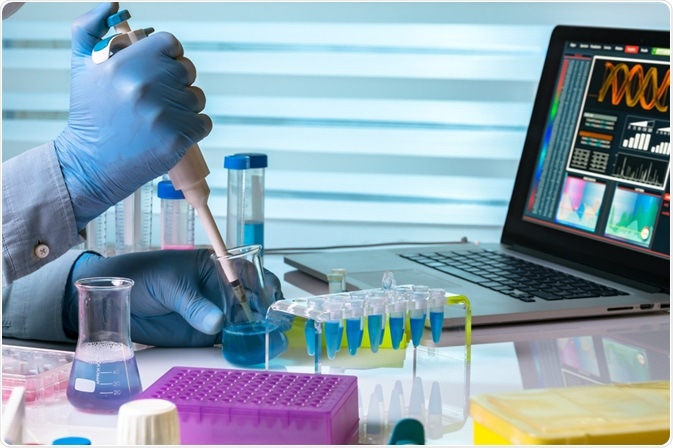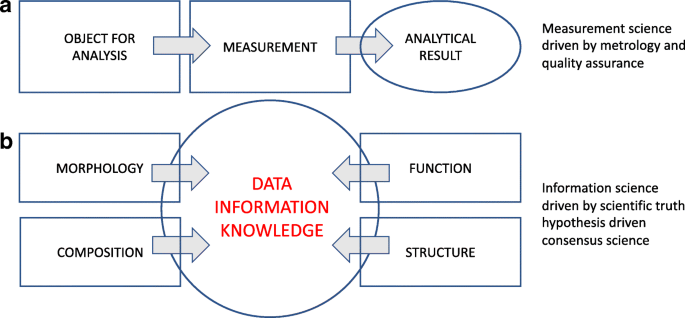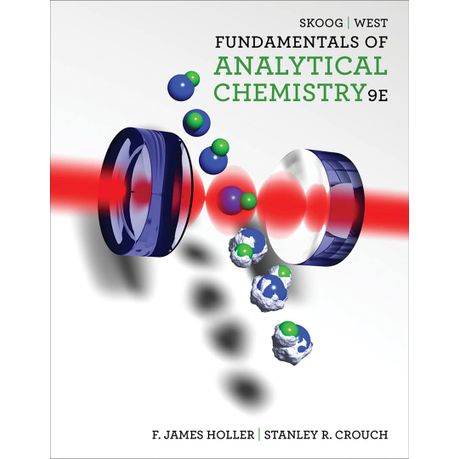8 Analytical Chemistry Services Mistakes Everyone Makes
9 Biggest Misconceptions About Types Of Science Laboratories
Many contemporary analytical chemistry is quantitative. Quantitative analysis can be additional split into various locations of study.
Separation of chemicals in order to measure the weight or volume of an end product. This is an older process and can be rather painstaking, however is a necessary first step when dealing with specific mixes of compounds, like extracts from organisms. Modern separation techniques such as HPLC often seek to separate and figure out amount or identity in a single automatic analysis by integrating a detector.
Analysis of substances with gadgets utilizing spectroscopy. By determining the absorption or emission of light by a substance we can determine the quantities of types or identify the chemical species, typically without separation. More recent approaches consist of infra-red spectroscopy (IR), atomic absorption spectroscopy (AAS), nuclear magnetic resonance (NMR) and neutron activation analysis (NAA).
Numerous techniques combine two or more analytical approaches (often called "hyphenated" methods). Examples of this include ICP-MS (Inductively-Coupled Plasma - Mass Spectrometry), where volatilization of a sample takes place in the initial step, and measuring of the concentration happens in the 2nd. The primary step may also involve a separation technique, such as chromatography, and the second a detection/ determining device.
Why I Hate Why Is Analytical Chemistry Important

These strategies can still be used to study speciation, however by the incorporation of a separation phase prior to volatilization. Analytical techniques rely on scrupulous attention to tidiness, sample preparation, precision and precision.
A basic approach for analysis of concentration includes the production of a calibration curve. If the concentration of aspect or substance in a sample is too high for the detection variety of the technique, it can just be diluted in a pure solvent. If the amount in the sample is listed below an instrument's range of measurement, the technique of addition can be used.
Analytical chemistry research study is mainly driven by performance (sensitivity, selectivity, effectiveness, direct variety, accuracy, precision, and speed), and cost (purchase, operation, training, time, and space). A great deal of effort is put in diminishing the analysis techniques to chip size. There are couple of examples of such systems competitive with traditional analysis strategies, possible advantages consist of size/portability, speed, and cost (Total Analysis System or laboratory on a chip) Much effort is likewise put into evaluating biological systems.
Metabolomics - comparable to proteomics, but dealing with metabolites. Metalomics - similar to proteomics and metabolomics, however handling metal concentrations and especially with their binding to proteins and other molecules. Infra-red spectroscopy (IR) High performance liquid chromatography (HPLC) Gas-liquid chromatography (GC) Nuclear magnetic resonance (NMR) Mass spectrometry (MS) New World Encyclopedia authors and editors reworded and completed the Wikipedia article in accordance with New World Encyclopedia standards.
The Ultimate Cheat Sheet On Analytical Chem Lab

(CC-by-sa), which might be utilized and distributed with correct attribution. Credit is due under the terms of this license that can reference both the New World Encyclopedia factors and the selfless volunteer factors of the Wikimedia Foundation.
The branch of chemistry that studies the separation, identification and metrology of the chemical components of natural and synthetic materials - analytical chemistry lab techniques. Segen's Medical Dictionary. 2012 Farlex, Inc. All rights booked. Chemistry interested in the detection of chemical substances (qualitative analysis) or the decision of the quantities of compounds (quantitative analysis) in a compound.
Inorganic Analytical Chemistry is a core part of the Lab of Inorganic and Nuclear Chemistry with diverse obligations that incorporate the measurement of various inorganic impurities in water, air, strong waste, and food, in addition to the analysis of biological tissues and fluids (blood, urine, bone) for poisonous metals/metalloids. The analysis of environmental samples is performed under appropriate regulatory standards: NYS DOH ELAP Laboratory ID 10762: NELAP E37911; and EPA Laboratory ID NY00005, while the analysis of scientific specimens is performed under CLIA 33D0654341.
The lab likewise supplies assistance for numerous emergency situation response programs including involvement as a Level 1 lab in the CDC's Lab Response Network for chemical representatives (LRN-C). The lab runs a proficiency-testing program for US-based State Public Health laboratories on behalf of the CDC's LRN-C program for micronutrient in urine and for a lewisite metabolite - chemistry lab setup.
5 Ways To Get Through To Your What Is Analytical Chemistry

This field covers the execution of analytical instruments and procedures utilized to separate, identify, and measure chemical matter. Those knowledgeable in analytical chemistry deduce chemical structures along with their behaviour in varying conditions. It covers a variety of functions consisting of drug development, forensic analysis and toxicology. Research study and advancement (R&D) of solution and procedures is key to continuously improving end items (most qualified).
Lots of sources are speaking about blockchain technology and how this can assist locations within the field. There are still factors to consider that require to be straightened out however the majority of agree that this technology can help improve security and innovation. As blockchain information is not owned by any one person, each individual associated with the deal has the chance to keep track of the information which limits the threats of inaccurate reporting and helps those involved remain truthful in their deals.
As everybody is dealing with the exact same information, the time to market is reduced and development is helped with. Analytical chemistry uses excellent profession potential customers for practitioners. The demand for chemical analysis is growing throughout a number of industries, from ecological sample screening, to confirming the health and security requirements of pharmaceutical, cosmetic, and FMCG products.
And thanks to being equipped with a crucial skill set, analytical chemistry is considered as progressively essential to companies' needs-- specifically those that work along the product life process. most qualified. For more on what it's like to work as an analytical chemist,.
The Ultimate Cheat Sheet On Medical Laboratory Design Layout

, analytical chemistry is not restricted to any particular type of chemical substance or response.
Analytical chemistry is a sub discipline of chemistry that has the broad objective of understanding the chemical structure of all matter and establishing the tools to illuminate such compositions. This varies from other sub disciplines of chemistry because it is not intended to comprehend the physical basis for the observed chemistry as with physical chemistry and it is not intended to control or direct chemistry as is frequently the case in organic chemistry and it is not necessarily planned to supply engineering tactics as are typically utilized in materials science. , (the chemistry of life).
Analytical chemistry is especially worried about the concerns of "what chemicals exist, what are their attributes and in what quantities are they provide?" These questions are frequently included in concerns that are more vibrant such as what chemical response an enzyme catalyzes or how fast it does it, or perhaps more dynamic such as what is the transition state of the reaction. The logical next steps of comprehending what it suggests, how it suits a larger system, how can this result be generalized into theory or how it can be utilized are not analytical chemistry (example of analytical chemistry). Because analytical chemistry is based on company experimental proof and limits itself to some fairly easy questions to the general public it is most carefully connected with difficult numbers such as just how much lead remains in drinking water.
There are so many different types of instruments today that it can look like a complicated range of acronyms rather than a unified discipline. Many analytical chemists focus on a single type of instrument. Academics tend to either focus on brand-new applications and discoveries or on new methods of analysis.
The Ultimate Secret Of Most Qualified

An effort to develop a new approach might include making use of a tunable laser to increase the specificity and sensitivity of a spectrometric method. Many methods, once developed, are kept intentionally static so that data can be compared over extended periods of time. This is especially real in industrial quality guarantee (QA), forensic and environmental applications.
Much of early chemistry (1661-1900AD) was analytical chemistry because the questions of what aspects and chemicals were present on the planet around us and what are their basic natures is extremely much in the world of analytical chemistry. There was likewise significant early development in synthesis and theory which obviously are not analytical chemistry.
The very first instrumental analysis was flame emissive spectrometry developed by Robert Bunsen and Gustav Kirchhoff who found rubidium (Rb) and cesium (Cs) in 1860. The majority of the significant advancements in analytical chemistry happen after 1900. Throughout this duration important analysis becomes gradually dominant in the field. In particular a lot of the basic spectroscopic and spectrometric methods were found in the early 20th century and fine-tuned in the late 20th century.
In the 1970s much of these techniques began to be utilized together to attain a complete characterization of samples. Beginning in around the 1970s into the present day analytical chemistry has gradually ended up being more inclusive of biological concerns (bioanalytical chemistry), whereas it had actually previously been mainly focused on inorganic or small organic particles.
I Changed My Mind About Analytical Chemistry Testing. Here’s Why

Typically, analytical chemistry has been divided into 2 main types, qualitative and quantitative: A lot of contemporary analytical chemistry is categorized by two different techniques such as analytical targets or analytical approaches. Analytical Chemistry (journal) reviews 2 various approaches additionally in the issue 12 of each year. Bioanalytical chemistry Product analysis Chemical analysis Environmental analysis Although modern-day analytical chemistry is dominated by sophisticated instrumentation, the roots of analytical chemistry and some of the principles utilized in contemporary instruments are from conventional techniques a lot of which are still utilized today.
Examples include: Titration involves the addition of a reactant to a solution being evaluated until some equivalence point is reached. Frequently the amount of product in the solution being analyzed may be identified (analytical chemistry labs). A lot of familiar to those who have taken college chemistry is the acid-base titration involving a color changing indication. chemistry lab space for rent near me.
Gravimetric analysis includes determining the amount of product present by weighing the sample before and/or after some transformation. A common example used in undergraduate education is the determination of the amount of water in a hydrate by heating the sample to get rid of the water such that the distinction in weight is because of the water lost.
In some cases little carbon consisting of ions are included in such schemes. With contemporary instrumentation these tests are hardly ever used however can be helpful for instructional functions and in field work or other circumstances where access to advanced instruments are not readily available or expedient. Spectroscopy measures the interaction of the molecules with electro-magnetic radiation.
The Piece Of What Is Analytical Chemistry Advice That’s Seared Into My Memory

Mass spectrometry steps mass-to-charge ratio of particles using electrical and electromagnetic fields. There are several ionization approaches: electron effect, chemical ionization, electrospray, matrix assisted laser desorption ionization, and others. Also, mass spectrometry is categorized by techniques of mass analyzers: magnetic-sector,quadrupole mass analyzer, quadrupole ion trap, Time-of-flight, Fourier change ion cyclotron resonance, and so on.
Comments
Post a Comment